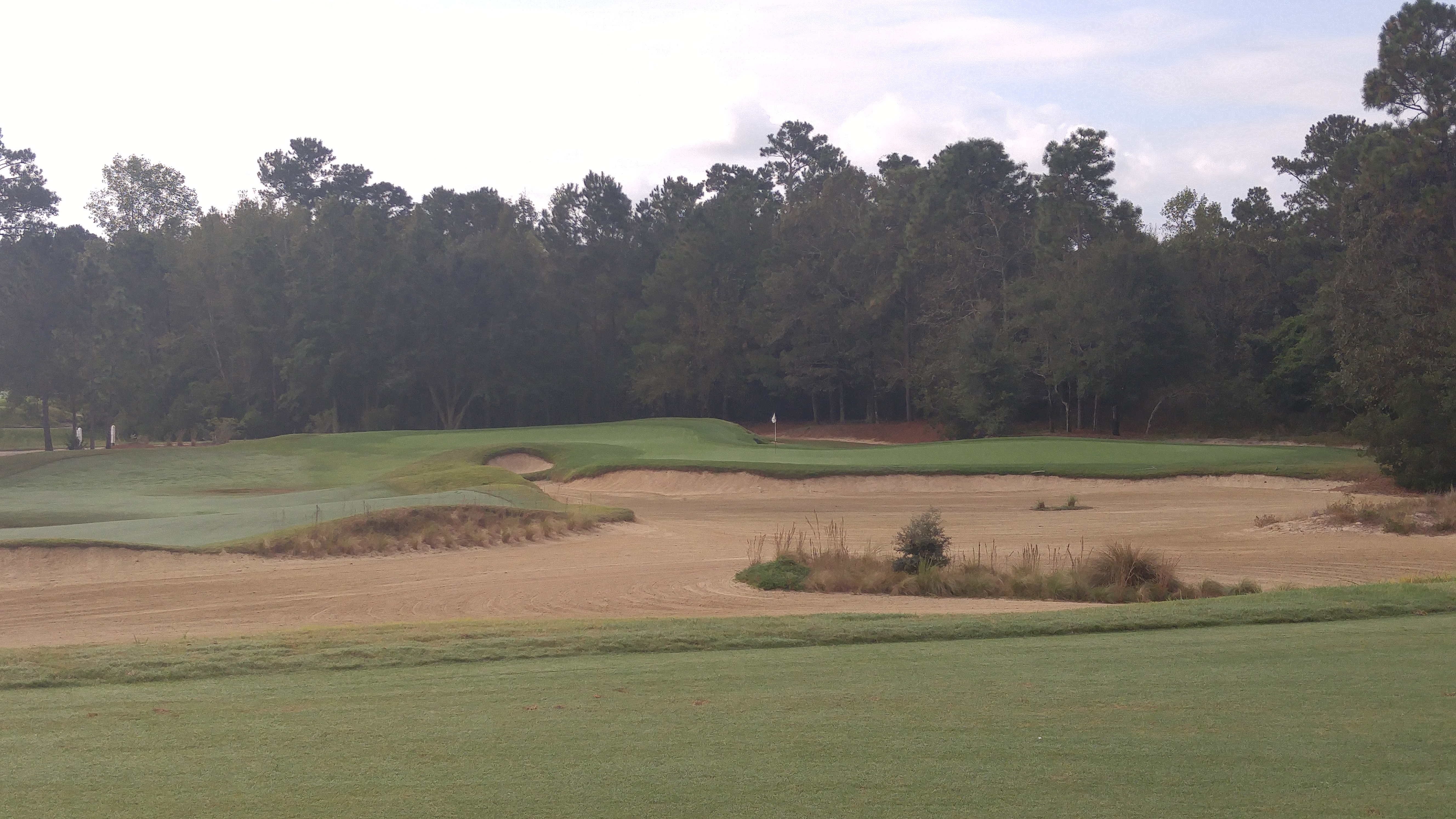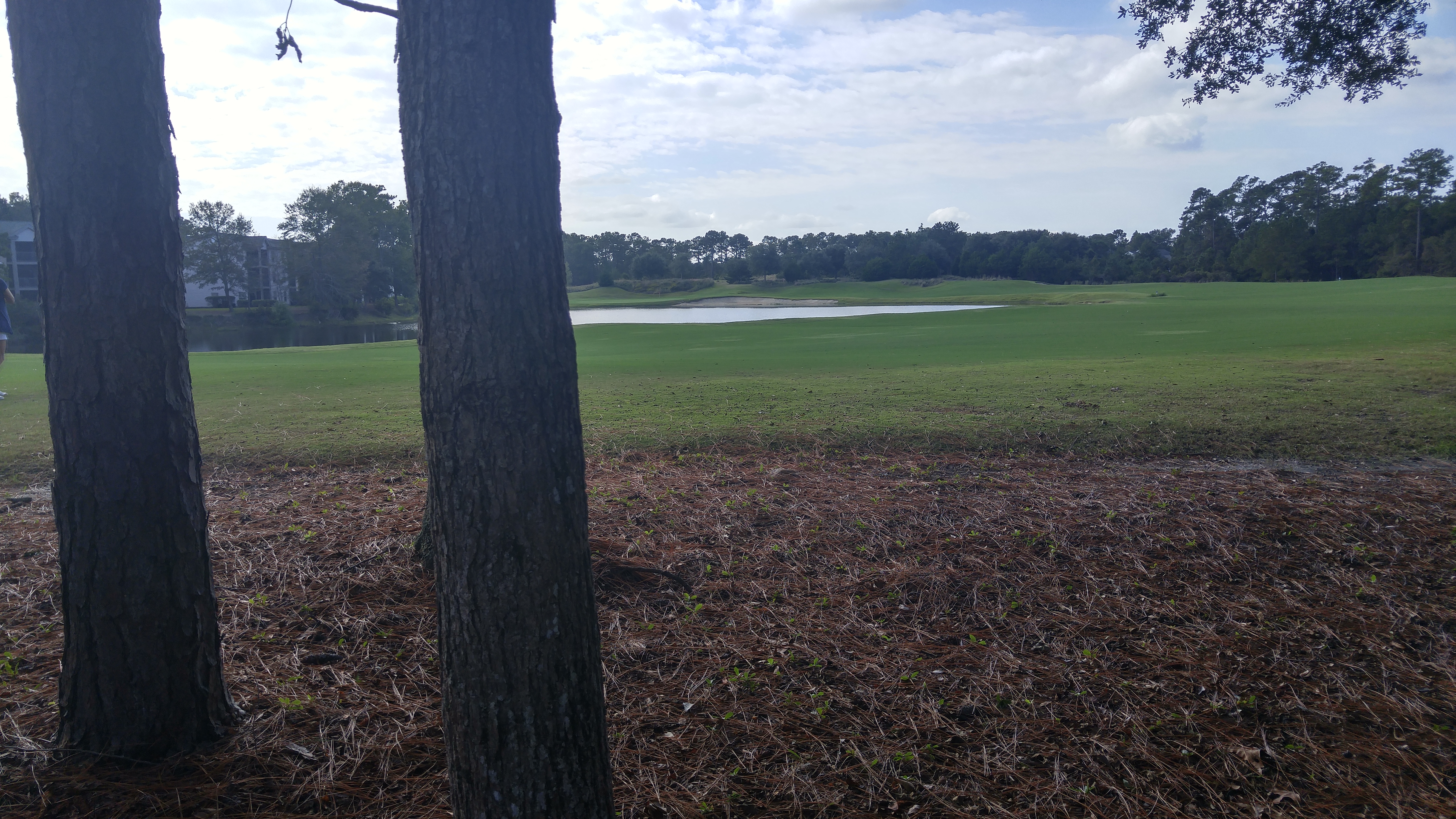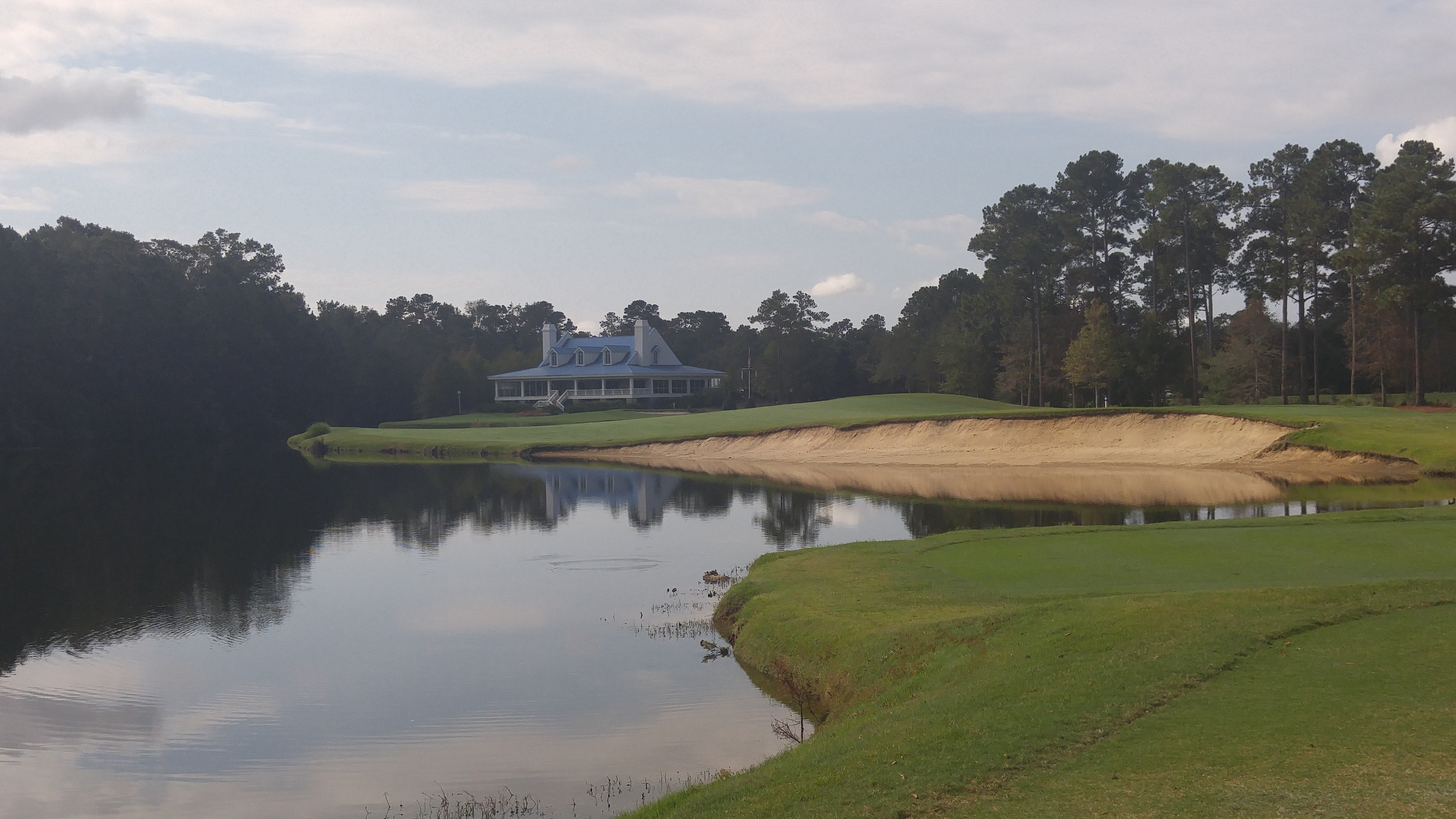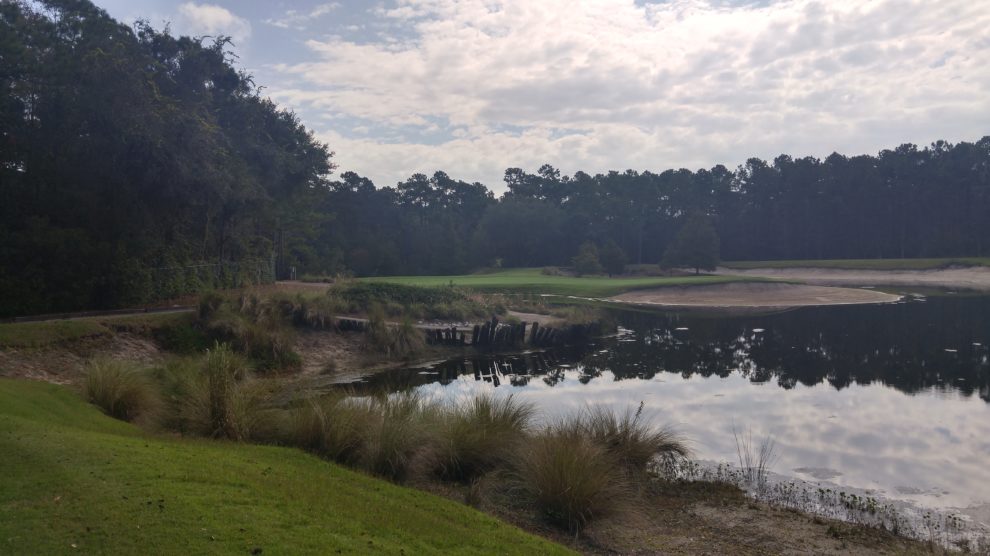Mike Strantz designed seven golf courses in his short 50 years. Seven.
Two of them are currently closed. Stonehouse Golf Club and Royal New Kent in Virginia were closed in 2017 when Traditional Golf Properties, their owner since 2001, shuttered them and put them up for sale. Stonehouse remains closed well into 2018, and it's uncertain if a buyer will come along. Royal New Kent was purchased in June 2018, and it will be restored and reopened in 2019.
That leaves five Strantz originals -- and his renovations, including at Monterey Peninsula Country Club's Shore Course -- as the only fossilized record of his design magic.
Two of them are a 90-second drive from each other in Pawleys Island, S.C., just south of Myrtle Beach.
Caledonia Golf and Fish Club, Strantz's first solo project from 1994, and neighboring True Blue Golf Club are the luminous courses in a Myrtle Beach golf scene that has such a wide spectrum of options that they can start to blur together. Caledonia and True Blue are a siren song to traveling golfers who have played enough Big Three signature courses, seen enough RTJ and got the totality of Greg Norman's design portfolio after walking any of his courses. Strantz was different -- radically so, even in his own portfolio. He wanted each golf experience to be unique, and he knew mind-jarring design could elevate the mental and spiritual connection with the game and make it stronger.
So, when I went down to the Myrtle area in early November, I wanted to experience maximum Strantz, even with truncated daylight. I organized a Sunday double, starting the day at True Blue and, with a 15-minute turnaround that would make most business fliers chew their nervous fingernails, Caledonia for the sunset.
(While not officially a Strantz original, The Heritage Club is closeby and has his fingerprints all over it thanks to a 1993 renovation with owner Larry Young's son, Danny. The green fees are significantly lower than Caledonia and True Blue, so you could play 54 in the summer and get Max Strantz in a single day.)
I'd played True Blue for the first time in 2017, and it was my only Strantz experience to date. For someone who wishes to rip driver on every hole, it was love at first site. True Blue is width personified. There's room to hit the ball practically anywhere within reason off the tee, and that means golfers of any skill level can feel good keeping the ball in play.
But the off-the-tee width is intentionally deceptive.
True Blue Golf Club
For as wide as True Blue feels in places, the mindful golfer realizes the abundance of shorter grass belies the strategic brilliance of the design.
The par-5 10th hole is a sharp dogleg right that doesn't feel that way off the tee box. For the golfer who's never seen the course, it seems like a throwaway tee shot to a vast, almost ceaseless fairway. But the farther left a player goes with their tee shot, the tougher the next two shots become. With a center-line bunker bisecting the fairway for the second shot, a golfer has to make a smart play to the right distance to feel comfortable for a third shot over lowcountry swamp-reeds to a massively undulating green. The only way to consider getting in home in two is taking on the small space between the center-line bunker and the bunker leading up to the wider fairway off the tee. That bunker seems superfluous on the teebox, but it's later clear it's everything.
And then there are times when Strantz just lays down the gauntlet. The short par-4 second could be driven by the longest of hitters, but a miss spells doom. An overly aggressive play could be lost in the trees, yes, but it could also be deflected or caromed into a wasteland of native grass tufts, unmanicured sand and a scrubby tree designed to force the high road for a proper tee shot. Laying up with a 200-yard shot off the tee opens up an approach to the multi-tiered, postage-stamp-feeling putting surface. There's plenty of room to hit the green, but there's not much room to hit the right spot on the green.

My favorite hole on True Blue has become the par-3 14th. The hole plays anywhere from 120-140 yards or so, depending on tee and hole location. The green slopes hard from back-to-front in a bit of a reverse Redan look. The shot is demanding, and par is anything but certain. However, what makes this hole special is the amphitheater-style tee box arrangement. With so much teeing ground to choose from, this single green complex could play as its own par-3 course -- kind of like the ninth at the Mike DeVries-designed Kingsley Club in Michigan.

The close at True Blue feels more conventional than you might expect, though the approach shot to 17 requires skill and commitment to avoid bailing out to stay dry. The approach to the 18th is another risk-reward gambit, and the beach bunkers on two of the final three holes are a thing of beauty.

True Blue is a buoy in a sea of the same four or five dogleg holes you see on a lot of golf courses, particularly those with housing developments as the real centerpiece. Strantz took lowcountry topography, made it dynamic and interesting, all the while challenging golfers of every skill level as much as they're willing to accept.
A number of my golf buddies told me I wouldn't like Caledonia, particularly compared to True Blue. They told me it was tight, and it would take driver out of my hand. So when we drove up the tree-lined road back to the clubhouse, I spied left and right just to see how narrow it felt. Then I saw the green on the par-5 10th (unbeknownst to me at that point), which looked as small as a thimble and I audibly gasped with trepidation and intrigue.
Caledonia Golf and Fish Club
It's evident riding up the driveway Caledonia is the antithesis of the modern width movement. The property, a former rice plantation, confined the side-to-side width on most every hole (except, ironically, the 10th). Even though most of the holes themselves were plenty wide, the landing areas were in such stark contrast to True Blue, I was scared off the driver by the third tee. I only used it on par 5s after that, resorting to a lower-flying shot with my 2-iron that took a lot of the trouble out of play.
Out of necessity, Caledonia has few straight holes. There are lots of doglegs. But Strantz made each of them compelling in their own way, creating a different set of tasks on each.
The par 3s at Caledonia steal the show. They're all brilliant.
The third is the longest of them all and comes off a long par 5 where you've already hit your first long irons of the day. The green is deep and fairly generous, but a huge bunker looms to the right some 8 feet underneath the green.
On No. 6, the golfer plays a 150-yard shot playing to a target where, if the hole is in the middle of the green, the landing area is deceptively large.
The ninth is a 90-yard shot coming off a risk-reward par 5. If you've messed up the shortest par 5 on the course, you're psychologically damaged enough to wonder if you can pull off a basic wedge.
At No. 11, the golfer takes on a Redan-style green contour mixed in with aspects of No. 12 at Augusta National. The safe shot leads to a safer score, but what fun is that?
The 17th is a break leading to the final hole, a mid-iron respite before a challenging final hole.
Strantz's finisher at Caledonia is only 380 yards, but the hole is shaped perfectly in tune with the rest of the course. I'll admit, throughout the round I got increasingly frustrated I felt I had to hit less than driver off the tee. The frustration led to some silly mistakes despite great execution off the tee. And yet, when I came to the final hole, I refused to give in to my emotions. The right play was a 200-yard shot to the center of the diagonally bending fairway to set up a mid-iron over marsh and water to the home green. I spent all day lamenting hitting iron off the tee, only to punch the air hard when I hit my 7-iron right at the target from the middle of the fairway. I'd conquered a piece of myself.
I think that's why I wound up loving Caledonia despite keeping the headcover on the driver almost the entire round. I cared about performing the shots required, and I cared about performing them until the very end...with an incredible sunset over the marshland as a backdrop. On so many courses where the questions become repetitive, I stop caring about giving the right answers and choose to ask my own questions. I wind up pulling out driver despite my wiser judgment and not much caring about the result.
Here, I wanted to pull off those tee shots because the variety of approach shots was so compelling. I hit a pitching wedge sky high over a tree to a hidden, sunken green. I hit a sidehill three-quarter wedge from the middle of the fairway to take on a rock-hard green with a tucked pin. I hit a 9-iron to a deceptively large par-4 green. And it goes on and on.
In sum, I hit short iron or less into a lot of holes. It's a 6,550-yard course from the tips. But the green complexes each felt like a unique scene, and they kept me engaged.
The staff at both Caledonia and True Blue are first-rate, and they take care of the golfers they know are paying good money to take on courses that should be the pride of the Grand Strand. The day was special, spent with good friends who were getting their first look at Strantz.
Mike Strantz demands a lot from golfers. He wants them to think, to chart, to anticipate -- and that's all before execution. Whereas I've spent many a round on cruise control, not very mindful of what I was doing, nothing is rote on a Strantz layout. And that's the sign of a great course and a great architect: elevating the common to something special.

